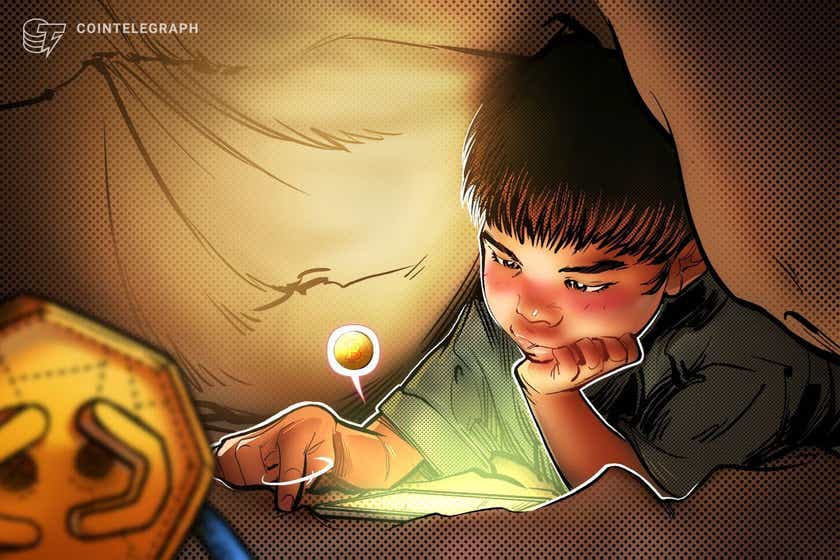Three Bitcoin children’s authors share the keys to teaching about Bitcoin and money, explaining why it’s important to do so from a young age.
Bitcoin is for everyone. That includes teenagers, children, toddlers and even newborns.
When these kids grow up, they’ll use the Bitcoin (BTC) protocol, so it “makes sense to start to integrate Bitcoin into learning as early as possible.”
At least, that’s according to Scott Sibley, one-half of the couple behind the creation of the Shamory Bitcoin game and the Goodnight Bitcoin children’s bedtime book. He joins a growing list of Bitcoin children’s book authors who care deeply about educating children on Bitcoin and money.

Sibley and his wife are firm believers that “kids can learn much faster, and earlier than most people think.”
It’s one of the reasons why they wrote their Bitcoin bedtime story, a tale for infants that riffs on the “plethora of “Goodnight” books (Goodnight Moon, Goodnight Baseball, etc.)” Incidentally, it also serves as a nice primer for their semi-educational game about Bitcoin mining, SHAmory.
The Sibleys noticed there’s a “product and content gap when it comes to fun ways for kids and adults to learn about Bitcoin,” and are bringing educational content that extends beyond the podcasts, books and long-form essays which Bitcoiners usually gorge upon.
“Financial education that includes Bitcoin is something that kids aren’t going to receive in most “traditional” schools. So right now, it’s on Bitcoin parents to find ways to weave that education in at home.”

Chris and Frieda Bobay are the brains behind Bitcoin for Kiddos: The Story of Bitcoin. They’re another couple passionate about imparting knowledge into “children about money early,” so that “they will have the best opportunity to recognize it [uncorruptible money] when they see it.”
They told Cointelegraph:
“We wanted to expose our kids early to Bitcoin and broader concepts of money early so they are more comfortable using the technology and talking about it when they are older.”
They add that “money for most adults is a taboo subject, but it doesn’t have to be.” In educating children about Bitcoin (and inherently, money) with books, it breaks down social barriers, unlocking “an incredible learning experience for the whole family.”
Michael Caras, aka the Bitcoin Rabbi and author of Bitcoin Money: A Tale of Bitville Discovering Good Money, compliments the other authors’ musings about children and finance. He told Cointelegraph “it’s important that children learn about working for money, saving, spending responsibly and also giving to charity.”

He notes the unintended advantage of teaching children about Bitcoin—it’s an “intro for adults,” too. Sibley explains: “kids, as well as the adults, will still be better off in the sense that we all have been exposed to and learned more about money, where it comes from, what makes it valuable, etc.” Sibley adds:
“These are all questions [about money] that most people probably go their entire life without thinking or learning about.”
Furthermore, given that “children don’t have all the biases that adults have,” they might approach the decentralized monetary network with an open mind. The Bitcoin Rabbi expands the idea, sharing “children understand the digital aspect of Bitcoin because they are digital native.”
“Not having preconceived notions about how traditional money and banks makes it easier for them to see Bitcoin as real money.”
Ultimately, not only do the Bitcoin children’s books subtly teach kids (and their parents) about Bitcoin, orange-pilling them along the way, they also only help to break down an enduring taboo — talking about money.





















